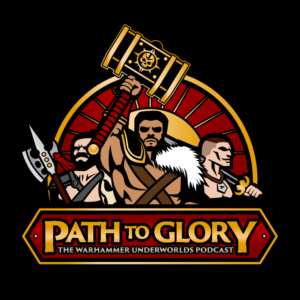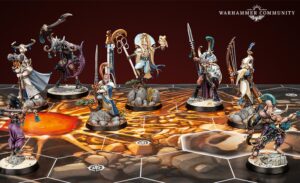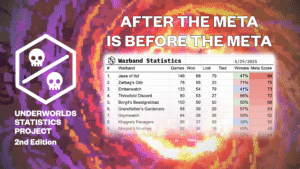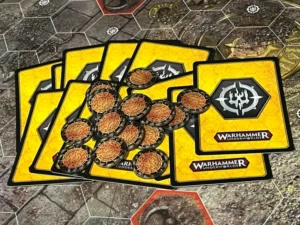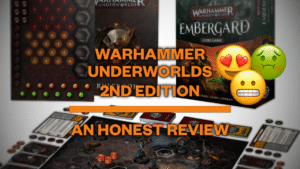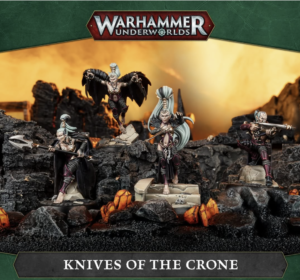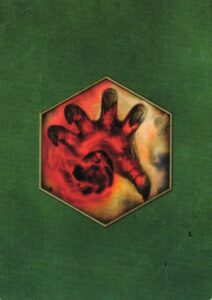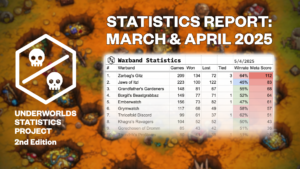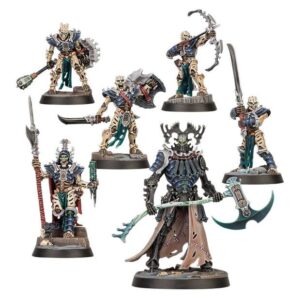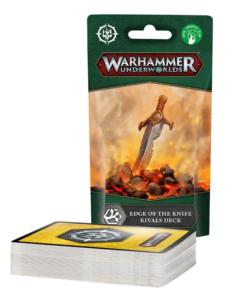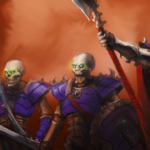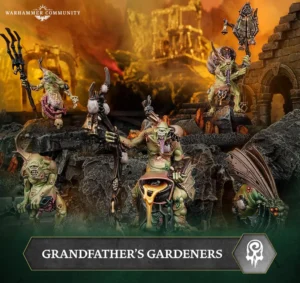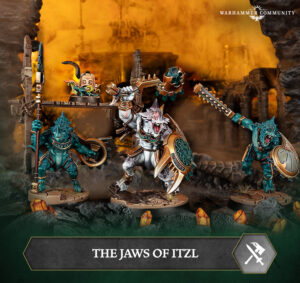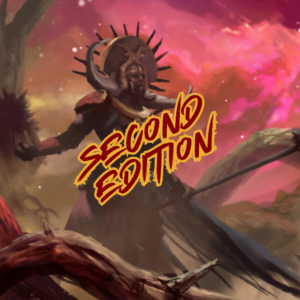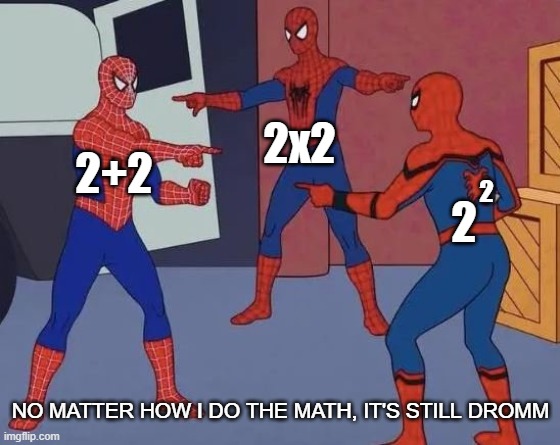
In preparation for today’s article, I scraped all the data of every player’s list for the Warhammer Underworlds World Championship from 2024. I’m going to go through an analysis of the data, including warband, deck choice, card choice and overall placement. I’ve got an eye to see what interesting trends come up in the data and what we can learn.
Deck Selection


During the event, we saw some clear play patterns emerge, namely the prominence of taking both Strike decks; Blazing Assault alongside Reckless Fury. Obviously, that was not just anecdotal, the data backs it up clearly. From a pool of 46 players, there were 92 decks chosen. 50 of the 92 were Strike (54.3%) and 19 of 46 (41.3%) players played those two decks in combination. Seeing the obviously known choice (along with 17 Dromm players), doesn’t necessarily tell us much. For me, it’s layering this along with the information of those who did well in the tournament and made the cut.


Based on the overall pool, the deck breakdown makes sense, with the majority being the two Strike decks and the rest coming from the next most popular decks. Notably, none of the 12 players using Pillage and Plunder or Wrack and Ruin made the cut. From a deckbuilding stance, we’ve got the majority playing the Blazing/Reckless combo as expected, but it’s the other combos that are the most interesting. Seeing C2C/Emberstone have 2 of 8 make the cut is expected proportionally. Blazing/C2C have 2 of the 4 players make it through (both Thricefold) and I think it’s a testiment to the strength of that pairing. Adding the higher scoring and defensive elements from Countdown into the basic aggro of Blazing Assault is a combo I absolutely love. Lastly, C2C pairing with Reckless Fury had the lone player taking the combo not only make the cut, but also place 2nd overall (congrats Matteo!). These are the most important data points we can get! When someone takes an off-meta choice and performs well it’s either an amazing player, an underrated pairing, or both (my opinion in this case).
Glory Totals

Collecting all the deck lists together, I was able to get glory totals for each deck at the event. With the limitation of 16 glory per rivals deck, and the fact that all surges are one glory, I wasn’t expecting to see a large spread of potential objective glory. And that’s really what we see. The majority of players fell in the 15-19 range. I like the super aggressive 21 glory ceiling that one player took (love it Val!). And it’s important to note that the lower end of glory was built through consistency of scoring, not raw power. As we’ve seen in the previous edition, those players with the lower totals are primarly playing the Strike playstyle.
I layered the cut on top of the chart so we can see where the top of the field had their decks tuned. The distribution is pretty normal, with 17 glory being the sweet spot for the event. 5 of the top 8 and 3 of the top 4 sat with this glory total in their deck. While we’re talking about these totals, it’s important to talk about the number of objectives as well. 14 players brought 13 or more objective cards, with the entirety of the top 8 all having more than the minimum. For more info on that topic, check out my article about deck size in this edition here.
Upgrade Glory

With the varied cost of upgrades something you now have to account for, it’s interesting to see how that’s come into play. Out of the 10-12 upgrades that players took for their decks, there was a very similar arc of upgrades landing in the 13 or 14 glory cost. This is no surprise as those two glory offensive (Great Strength, Keen Eye) and defensive (Utter Ignorance, Great Fortitude) upgrades are some of the most powerful and consistent abilities to grant your fighters.
Comparing these totals to the deck glory totals sounded like it would be interesting to me. With such a tight band of upgrade costs and the fact that Strike decks are layering in a larger amount glory from bounty to be able to effectively upgrade their fighters, meant that most decks are sitting in about a similar ratio between the two values. This doesn’t really tell me much about why those upgrades are or are not at an ideal value. I think for now some good takeaway is that sitting in the 12-14 glory range is workable and the quality of the upgrade outweighs the cost.
Card Choice

Overall, we saw 6 cards clearly played above all else: Great Fortitude, Sidestep, Keen Eye, Duellist, Healing Potion and Great Strength. First off, the first three are featured in 3 of 6 available decks, so most deck combos had access to these cards. The next three are in two decks, so still have high access rates. The sheer strength we’ve seen in these old staples are on high display. In the old essentials pack, we had access to the majority of these cards. However, Keen Eye is just a solid effect that wasn’t in there. And Duellist was a less powerful Duellist’s Speed. A lot has been said over the years about Great Fortitude, Great Strength and Sidestep. These cards are always welcome in a hand and it’s no surprise that they’re in most decks.
Outside of these super powerful crossover cards, we saw every Blazing Assault player take Accurate, Critical Effort and Get Stuck In. All 23 Reckless Fury players took Bloody Momentum, Diving In, Frenzied Rush, Get It Done, Headlong Charge, and of course Utter Ignorance. Confusion and Iron Grasp were in every Emberstone loadout. Cataclysm only had Spread Havoc (as a free end phase score) taken by every player who could access it. Lastly, Pillage players all had Share the Load and Impossibly Quick.
A lot of the top cards here were based on the amount of players that were playing the two strike decks. But let’s delve further (oops, got a stagger token now).
Objectives

For objectives, we see a strong amount of the top players taking the top cards here, but it’s also important to point out where top players had cards that were not adopted by the rest of the field:
- Unrelenting Massacre: This card saw the majority of players who had it in their deck make the cut. As a 3 glory card that does have significant counterplay, it’s really good in a Dromm/Reckless Fury meta.
- Vicious Brawl: Personally, I thought this was a card that looked relatively difficult to set up if you weren’t the underdog. And then I played against it. Once again, a good score into an aggressive meta.
- Bloodbathed Rampager: A card that requires some deck or warscroll combos to execute seems to have found some decent consistency for the top 4. Dromm’s Enrage makes it trivial to score.
- Too Close for Comfort: A card that rewards being close to the enemy does reward your aggressive playstyle and it’s made easier if your opponent also wants to smash!
- Overwhelming Force: The notable piece of this is that it was in the #2 deck. As this was a slightly different Dromm from Matteo, using Countdown to Cataclysm, I love this inclusion. The Gorehulk starts with a 4 hammer profile (going to 5 inspired) and so it’s a pretty consistent score off a very accurate attack.
Ploys

I’ll continue just commenting on the unique data points here:
- Reckless Attitudes: A solid control card that limits your opponent’s options. Cards like these are always hard to justify unless you are confident in your skill to play them at the most effective time. It doesn’t shock me that 5 of the top 8 were playing it to good effect.
- Braced: My comment is that this card should be looked at beside Shields Up!. 15 players took one or the other of the guard cards from Reckless/Blazing. And for the 10 of them that had access to both of these, none doubled up. No wonder there was only one player taking Living Bludgeon.
- Raging Tremors: As someone who’s played a number of Countdown games, I’ve tended to overlook this one. But being able to get an extra re-roll against a priority target is likely worth the ploy slot. I once again think it’s fun in a strike warband.
Upgrades

- Bladecatcher: Obviously, turning off Cleave and Grievous are insanely powerful.
- Sharpened Points: Other than where the opposing enemy has Bladecatcher, Cleave is great in the heavy shield meta.
- Fury of Aqshy: Similar to my above thoughts on Reckless Attitudes, it’s a high skill card that punishes your opponent’s choice of actions based on your excellent positioning.
- Bellowing Tyrant: The only player to take and use it was Matteo in second place for the event. The ability to push your fighters around and remove a charge token is situational and powerful. For some beautiful use of the ability (and to see Daniele remove it using the Thricefold’s Vile Temptations), check out the stream of the finals here.
Final Thoughts
There’s so many ways to break down the data that I’ve probably missed some metrics or viewpoints that people would like to see. If there’s something you want to see a snapshot of, please let me know. My plan is to continue these style of decklist breakdowns at the conclusion of major events (where I can get the lists). Let me know your thoughts! What did I miss? Any conclusions you’re drawing here? I’m on the Discords as Matt ~ Set The Tempo, or reach out to me at setthetempoblog@gmail.com. And make sure to set your own tempo!
